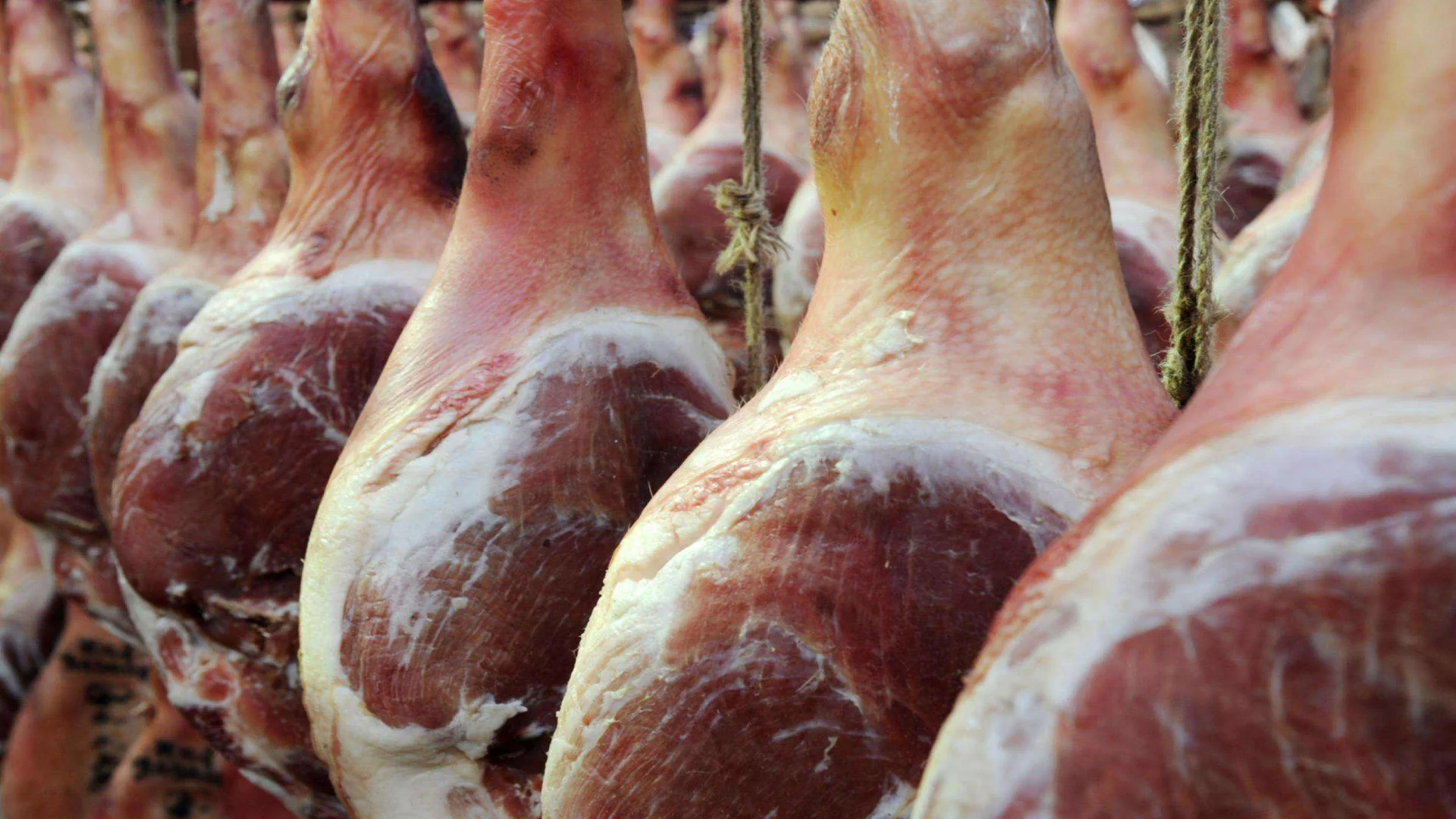The Time-Honored Delicacy of Liangshan – Mian Ning Ham
En tant que professionnel gastronomique, I am thrilled to introduce you to the exquisite Mian Ning Ham, a culinary treasure from Liangshan, Sichuan Province. This traditional delicacy is not only a testament to the rich culinary heritage of the Yi ethnic group but also a symbol of their deep-rooted culture and history.
Origine et origine culturelle:
The Mian Ning Ham has its roots in the ancient practices of the Yi people, who have been curing and preserving pork for centuries. It is a dish that has been passed down through generations, with each family having their unique recipes and curing techniques. The salt-cured ham is a staple in the Yi diet, reflecting their deep connection to the land and the animals they raise. It is not just a food item but a cultural emblem that represents the resilience and resourcefulness of the Yi people.
Ingrédients et préparation:
The Mian Ning Ham is made from the hind leg of a pig, which is meticulously selected for its size and quality. The process begins with a thorough cleaning of the pig leg, followed by a generous application of salt. This salting process is crucial as it draws out moisture, ensuring the preservation of the meat. The ham is then left to cure for an astounding three years, during which time the salt penetrates deeply into the muscle fibers, infusing the meat with a rich, savory flavor.
Goût et texture:
The result of this lengthy curing process is a ham with an intense, yet balanced flavor profile. La viande est tendre et succulente, with a firm yet yielding texture that melts in your mouth. The fat, rendered down by the salt and time, adds a decadent, creamy quality that complements the lean meat perfectly. Each bite is a symphony of saltiness, umami, and a subtle sweetness that comes from the natural sugars in the pork.
Description visuelle:
Visuellement, the Mian Ning Ham is a sight to behold. The outer layer, or the rind, is a deep, rich brown, almost black, with a slightly wrinkled texture that speaks of its age and the transformative power of time. When cut, the cross-section reveals a gradient of colors from the outer, darker layers to the lighter pink of the inner meat. The marbling of fat throughout the ham creates a beautiful pattern, promising a rich, buttery flavor with every slice.
Signature Dishes and Culinary Uses:
Mian Ning Ham is a versatile ingredient that can be the star of a dish or a subtle enhancer of other flavors. It can be served thinly sliced on its own as a delicacy, or used in a variety of dishes such as:
– Ham and Vegetable Stir-Fry: The ham’s rich flavor pairs well with a medley of vegetables, creating a hearty and satisfying meal.
– Ham and Bean Curd Soup: The depth of the ham’s flavor adds a layer of complexity to a simple soup, making it a comforting and nourishing dish.
– Ham-Stuffed Baked Potatoes: A more contemporary use, the ham’s saltiness contrasts beautifully with the sweetness of the potato.
Caractéristiques culinaires:
The Mian Ning Ham is characterized by its distinct fermentation aroma, which is a result of the natural microbial activity during the curing process. This aroma, while strong, is not overpowering and adds a unique depth to the ham’s flavor. The ham’s ability to stand alone as a dish or to enhance other ingredients makes it a versatile and cherished part of the Yi culinary tradition.
En conclusion, the Mian Ning Ham is more than just a food item; it is a piece of history, a connection to the past, and a celebration of the Yi people’s culinary artistry. It is a dish that deserves to be savored and shared, a testament to the enduring legacy of traditional food practices.
